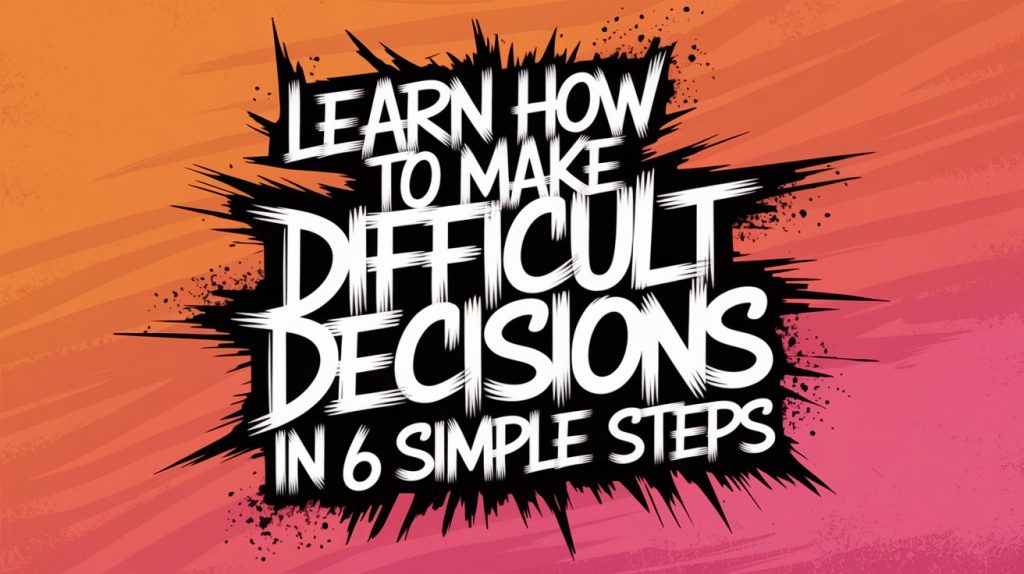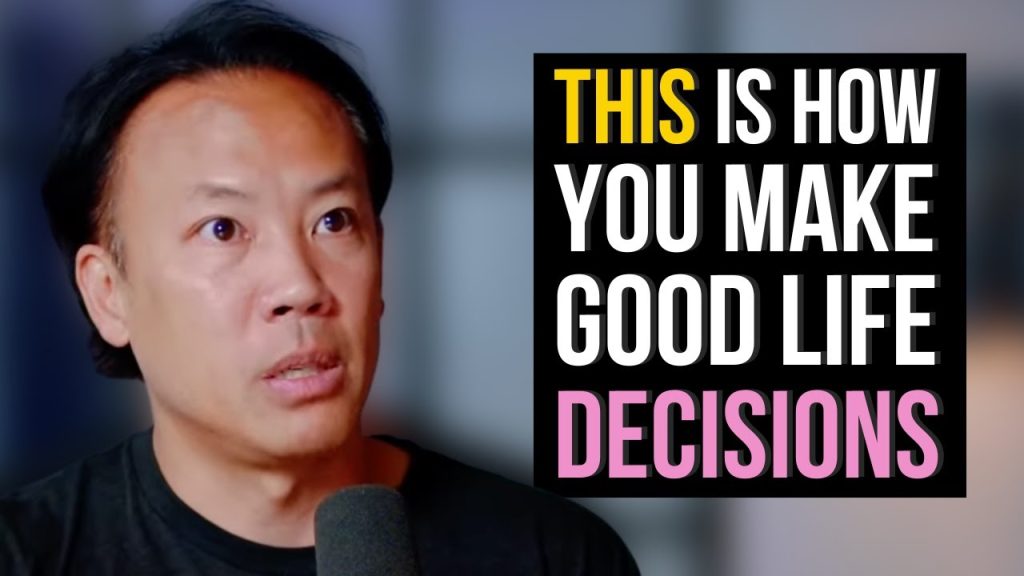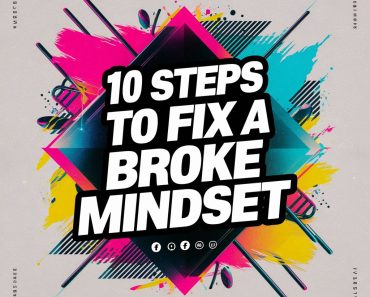Have you ever felt stuck, unsure of which direction to take when faced with a tough choice?
It’s something we all deal with, and let’s be honest, it can feel pretty overwhelming. But guess what?
There’s a way to simplify the process, and in this article, you’ll learn six easy steps to make those tough decisions with confidence.
I learned these six easy steps from listening to Jim Kwik and Steven Bartlett, host of “The Diary of a CEO”.
They talked about a technique known as the 6 Thinking Hats, developed by Edward de Bono, that shows how adopting different thinking styles can greatly enhance our decision-making process.
This approach encourages us to wear six metaphorical hats, each representing a unique perspective such as data analysis, emotions, critical judgment, optimism, creativity, and process management.
In a nutshell, these steps will walk you through everything from getting clear on your options to weighing the pros and cons of each one.
Curious to find out how? These six steps are straightforward, effective, and have helped many people make smarter decisions.
So, let’s dive right in and uncover the secrets to making even the toughest choices a whole lot easier!
Understanding the 6 Thinking Hats Technique
Introduction to Edward de Bono’s 6 Thinking Hats
Have you ever felt stuck when making a decision? We’ve all been there, overwhelmed by choices and unsure which direction to take.
One useful strategy to navigate such predicaments is Edward de Bono’s 6 Thinking Hats technique.
Developed by de Bono, a pioneer in creative thinking, this method encourages us to adopt different “hats” or perspectives, helping us explore all angles of a problem.
Each hat represents a unique mode of thinking, from relying on data to tapping into emotions.
It’s like having six different experts at your disposal, each providing valuable insights. Through this article, let’s dive deep into how each hat aids in decision-making and innovation.
The Importance of Varied Thinking Styles
Imagine if all our decisions were made based on just logic or solely on emotion. They’d lack balance and completeness.
Varying our thinking styles is crucial because it prevents us from falling into the trap of one-dimensional analysis. By wearing different hats, we ensure that our decisions are well-rounded.
It empowers us to consider data, emotions, risks, opportunities, creativity, and overall oversight. This diverse approach ensures that we don’t miss out on any crucial aspect of our decision-making process.
Applications in Decision-Making and Innovation
The 6 Thinking Hats technique is invaluable in both decision-making and innovation. Whether we’re deciding on where to live, launching a new product, or even figuring out office dynamics, this method can be our go-to tool.
It creates a structure around brainstorming, ensuring that we address every facet of a problem. Its flexibility allows it to be applied both individually and in team settings, making it a versatile tool for personal and professional growth.
Step 1: Gathering Data and Facts with the White Hat
Focusing on Data, Facts, and Logic
Our journey begins with the White Hat, which symbolizes a clear, data-driven approach. Think of it like a scientist in a white lab coat, dedicated to logic, facts, and information. When we don this hat, we focus solely on gathering and analyzing objective data. There’s no room for speculation or emotions here—only hard evidence matters.
Analyzing Living Costs, Commute, and Amenities
Let’s say we’re deciding where to live. With the White Hat on, we start by considering various costs: How much is the rent or mortgage? What are the commuting expenses? We also look at amenities—are there good schools, parks, or grocery stores nearby? This data-driven analysis provides a solid foundation for our decision.
Collecting Relevant Information
Collecting data doesn’t stop at surface-level information. We dive deeper—what are the crime rates? Are property values appreciating or depreciating? By gathering all relevant facts and figures, we arm ourselves with a comprehensive view of the situation, allowing us to move forward with confidence.
This image is property of i.ytimg.com.
Step 2: Trusting Your Emotions with the Red Hat
Emphasizing Emotions and Intuition
Now, let’s switch to the Red Hat, which is all about emotions and intuition. This is where we allow our feelings to play a significant role.
Emotions often hold valuable insights that data might miss. The Red Hat invites us to reflect on how various options make us feel, without needing to justify these emotions logically.
Considering Feelings and Family Ties
In our quest to find a new home, the Red Hat prompts us to think about emotional connections. Does one location make us feel more at ease?
Maybe one city is closer to family, making it a more emotionally appealing option. These ties can have a profound impact on our overall happiness and wellbeing.
Listening to Gut Reactions
Sometimes, our gut reactions are the loudest in the room. The Red Hat encourages us to listen to these instincts. Are there places that just feel right or wrong? Trusting our intuition gives our decision a human touch that pure data can’t offer.
Step 3: Evaluating Risks with the Black Hat
Encouraging Critical Judgment and Risk Awareness
Putting on the Black Hat means it’s time to be the critic.
This hat fosters an atmosphere of caution and critical judgment.
It’s important to actively think about what could go wrong, examining all potential downsides and risks.
Contemplating Potential Downsides and Risks
For our home search, this could mean considering the potential for natural disasters in one area or the volatility of the housing market in another.
It’s about shining a spotlight on all the negatives and worst-case scenarios we might face.
Identifying Obstacles and Challenges
The Black Hat also helps us identify obstacles we might not have initially considered.
Perhaps one location has a high crime rate or another place has poor internet connectivity.
Identifying these challenges early on allows us to think of ways to mitigate them.
This image is property of pixabay.com.
Step 4: Embracing Optimism with the Yellow Hat
Highlighting Benefits and Positive Outcomes
Switching to the Yellow Hat, we flip our perspective entirely. This hat is all about optimism, highlighting benefits, and positive outcomes. After the gloomy predictions of the Black Hat, the Yellow Hat helps us see the sunshine and opportunities.
Exploring Potentials of New Opportunities
With the Yellow Hat, we think about the hidden potentials. Maybe moving to a new city offers better job prospects or healthier lifestyle options. It’s about focusing on the positives and the growth opportunities each option presents.
Visualizing Success and Benefits
We visualize our success stories here. Imagine how our lives would improve by embracing a new environment. Maybe our new place will offer a better quality of life, with ample green spaces and community activities. This visualization motivates and inspires us.
Step 5: Unleashing Creativity with the Green Hat
Fostering Creativity and New Possibilities
With the Green Hat, we enter the realm of creativity and innovation. This hat invites us to think outside the box, fostering unusual and non-traditional solutions to our problem.
Considering Non-Traditional Solutions
For instance, instead of choosing between City A and City B, the Green Hat might suggest we try a hybrid lifestyle. Perhaps we can arrange to live in multiple places throughout the year. Maybe remote work becomes a primary lifestyle consideration.
Brainstorming Innovative Ideas
We brainstorm ideas like never before. Could we renovate a van and travel while working remotely? Or perhaps invest in properties in multiple countries to live in different climates year-round? The Green Hat pushes us to explore uncharted territories and imaginative solutions.
This image is property of pixabay.com.
Step 6: Integrating Insights with the Blue Hat
Overseeing the Decision-Making Process
The Blue Hat acts as the manager, overseeing the entire decision-making process. It orchestrates the use of all other hats, ensuring we’ve considered every perspective.
Integrating Insights from Other Hats
This hat synthesizes insights from the White Hat’s data, the Red Hat’s emotions, the Black Hat’s risks, the Yellow Hat’s opportunities, and the Green Hat’s creativity. It brings everything together into a cohesive and comprehensive view.
Making a Balanced and Informed Decision
Finally, the Blue Hat helps us arrive at a balanced and well-informed decision.
By considering all perspectives, it ensures that our choice is both logical and emotionally satisfying, reducing regrets and second-guessing.
How To Use This Mindset Technique in Practice
Using the Technique Individually
Individually, we can adopt the 6 Thinking Hats technique when faced with any significant decision.
By moving through each hat, we ensure that our decision is well-rounded and considers every aspect.
It empowers us to tackle even the most daunting choices confidently.
Applying the Method in Team Settings
In a team setting, this technique can enhance collaboration and innovation.
Each team member can wear a different hat to provide diverse perspectives.
Alternatively, the entire team can progress through each hat together, encouraging comprehensive discussions.
This step-by-step approach ensures no stone is left unturned.
Real-World Examples and Case Studies
Consider a company debating on launching a new product. Initially, the team wears the White Hat, gathering market data and customer feedback.
They then switch to the Red Hat to consider their emotional connection to the product.
The Black Hat’s turn brings up supply chain risks, while the Yellow Hat highlights the potential market success. With the Green Hat, they brainstorm innovative marketing strategies.
Finally, the Blue Hat brings everything together for a balanced launch plan. Such structured thinking can drastically improve business outcomes.
This image is property of pixabay.com.
Importance of Perspective Shifts
Encouraging Comprehensive Analysis
Shifting perspectives encourages a more comprehensive analysis of any situation.
We step out of our usual thought patterns and biases, seeing the problem through a fresh lens each time.
Shifting Viewpoints for Better Decisions
By embracing varied viewpoints, we’re less likely to overlook critical aspects of a problem.
This holistic approach aids in making better, more informed decisions that stand the test of time.
Harnessing Different Perspectives
Harnessing different perspectives not only improves our decisions but also enhances our understanding of complex issues.
It cultivates empathy and promotes a balanced view, making us wiser and more thoughtful individuals.
Conclusion
Recap of the 6 Steps in Decision-Making
To recap, the 6 Thinking Hats technique is a powerful decision-making tool. We begin with the White Hat to focus on data, then switch to the Red Hat to acknowledge emotions. The Black Hat helps us evaluate risks while the Yellow Hat emphasizes optimism. The Green Hat fosters creativity, and finally, the Blue Hat integrates all insights for a balanced decision.
Benefits of Using the 6 Thinking Hats
By using this method, we ensure our decisions are comprehensive, well-rounded, and balanced. The varied thinking styles prevent one-dimensional analysis and encourage us to explore all aspects of a problem.
Final Thoughts on Informed and Balanced Decisions
In our fast-paced world, making informed and balanced decisions is more crucial than ever.
The 6 Thinking Hats technique offers a structured, yet flexible approach that can be tailored to any decision-making scenario.
It empowers us to think critically, creatively, and comprehensively, ensuring our choices are not only logical but also emotionally satisfying and innovative.
Through this method, we can confidently navigate the complexities of life and business, making decisions that truly stand the test of time.









